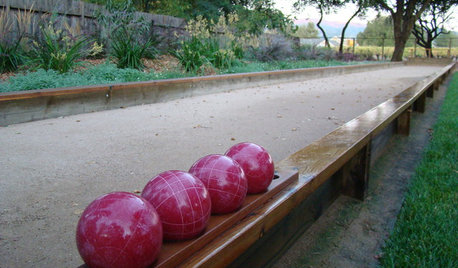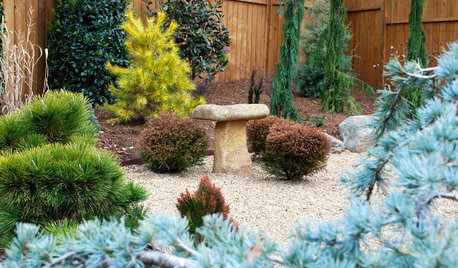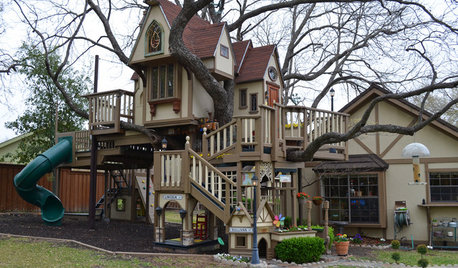balled and burlap trees....clay ball as hard as a rock!
teeka0801(7aNoVa)
7 years ago
Featured Answer
Sort by:Oldest
Comments (20)
ken_adrian Adrian MI cold Z5
7 years agowisconsitom
7 years agoRelated Discussions
My first bowling ball
Comments (1)Pegg That came out very pretty, can't help with the photos cause I don't know how to do it myself, but congratulations on finishing the ball, it looks great. Alberta...See Moreconcrete ball
Comments (24)Okay, I gotta try the styrofoam center to see if it works. If the mix is heavy enough, it should hold it in the center. I have made a hollow ball using the meathod in the above link. I used a large childs ball, slightly over inflated to make a firmer work surface. I used quikwall concrete instead of regular sand concrete and added quikrete concrete acylic fortifier to my mix... some people use Elmer's glue. Quickwall is more expensive but creamy and easier to smooth. It is used for stucco type applications and already has polyester fibers in it. I used strips of drywall tape to make the finished ball stronger. Wait a few days for it to harden, slowly deflate the ball and you have a hollow sphere. My ball didn't turn out perfectly smooth but good enough for me..it was my first attempted. It's been outside in freezing snowy Michigan weather for about 4 years now without cracking. If you have any concrete left, you can fill glass ornaments with it, wait a day and then crack them like hard boiled eggs and you have little concrete balls. Wear gloves and be careful not to cut yourself. It can get addictive... I've made hundreds of them....See MoreHard little mud balls in soil?
Comments (5)I added some clay soil to my street tree years ago. It did not really help, I was adding more OM and I found tiny clay balls, so I just scooped them up and back into the hot bin they go. The hot bin is 130 fairly consistently, I measure the temp with a compost thermometer. The hot bin will melt down all the little clay balls. Then they will be added back to the over all garden soil....See MoreLooking for: Smallish toms, hard as a rock with tough skins
Comments (19)I wonder if Kumato might fit the bill. These are the brown tomatoes that you can find in grocery stores in the winter. From what I hear, they come true from saved seed. They have tough skins and are about the size of a golf ball. Linda ^^^^^^^^^^^^^^^^^^^^^^ wikipeda says that it is a heirloom, originally from Spain (under different names ). The company that grows KUMAO and distributes fruits won't sell the seeds. BECAUSE, they want to sell the fruits . Trader Joe's sells them. I Bough a package ($3.79/lb). Dave's garden says: that the fruits are sterile and seedless !! That is nonsense. They are loaded with seeds. So I will grow one plant....See MoreEmbothrium
7 years agolast modified: 7 years agokentrees12
7 years agolast modified: 7 years agoEmbothrium
7 years agoteeka0801(7aNoVa)
7 years agoMarie Tulin
7 years agoken_adrian Adrian MI cold Z5
7 years agoToronado3800 Zone 6 St Louis
7 years agoEmbothrium
7 years agolast modified: 7 years agoteeka0801(7aNoVa)
7 years agoken_adrian Adrian MI cold Z5
7 years agowisconsitom
7 years agoedlincoln
7 years agoLogan L Johnson
7 years agosam_md
7 years agoMarie Tulin
7 years agolast modified: 7 years agobrandon7 TN_zone7
7 years agoMarie Tulin
7 years agolast modified: 7 years ago
Related Stories

GREAT HOME PROJECTSWhat to Know About Adding a Backyard Bocce Ball Court
A regulation court in a relaxed setting helps you get the most from the Italian pastime. Here's what it takes to build one at home
Full Story
GARDENING GUIDESGreat Design Plant: Thuja Occidentalis ‘Bobozam’
Sculptural, diminutive and low maintenance, Mr. Bowling Ball arborvitae works hard in small spaces
Full Story
GARDENING GUIDESGardening Solutions for Heavy Clay Soils
What’s a gardener to do with soil that’s easily compacted and has poor drainage? Find out here
Full Story
TREESHow to Buy Healthy Trees and Shrubs
A healthy young plant with a strong form is more likely to do well in your yard. Here’s what to look for at the nursery
Full Story
CHRISTMASReal vs. Fake: How to Choose the Right Christmas Tree
Pitting flexibility and ease against cost and the environment can leave anyone flummoxed. This Christmas tree breakdown can help
Full Story
GARDENING GUIDES5 Best-Behaved Trees to Grace a Patio
Big enough for shade but small enough for easy care, these amiable trees mind their manners in a modest outdoor space
Full Story
LANDSCAPE DESIGNPretty Trees for Patios, Paths and Other Tight Spots
Choose trees for their size, shape and rate of growth — or shape them to fit your space. Here's how to get started
Full Story
MOST POPULARThe Most Incredible Kids' Tree House You'll Ever See?
Duck your head to enter this unforgettable Dallas wonderwork, lovingly crafted with imaginative delights
Full Story
GARDENING GUIDESGarden Myths to Debunk as You Dig This Fall and Rest Over Winter
Termites hate wood mulch, don’t amend soil for trees, avoid gravel in planters — and more nuggets of garden wisdom
Full Story
LANDSCAPE DESIGNGreat Design Plant: Retreat to the Shade of Hardy Catalpa
Big foliage and a towering height provide a shady respite in summer, but that's not all hardy catalpa offers dedicated gardeners
Full Story







gardengal48 (PNW Z8/9)